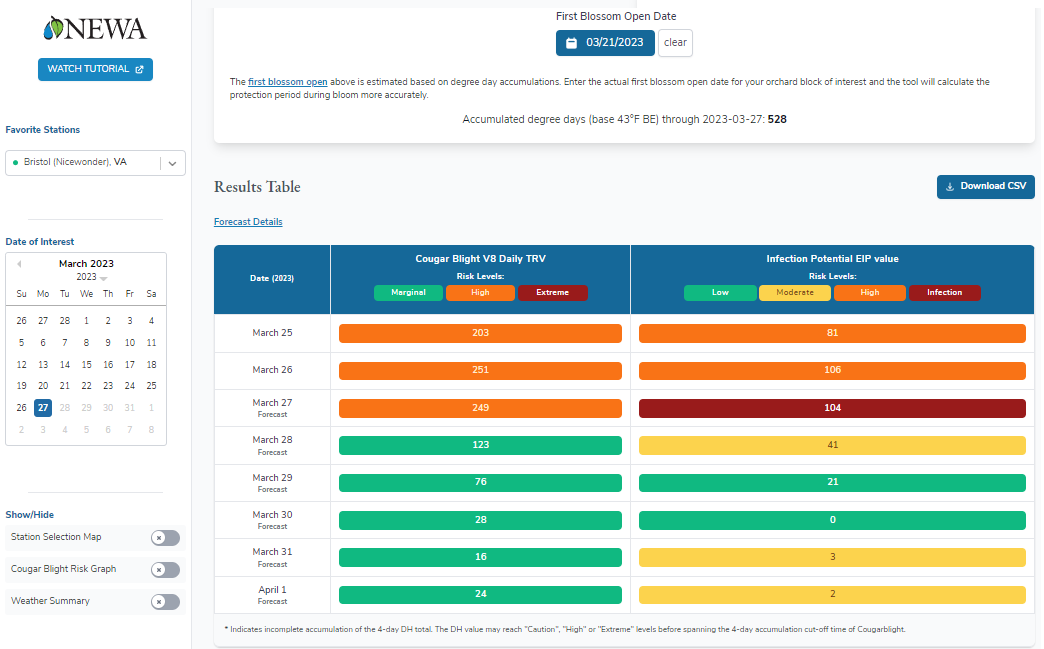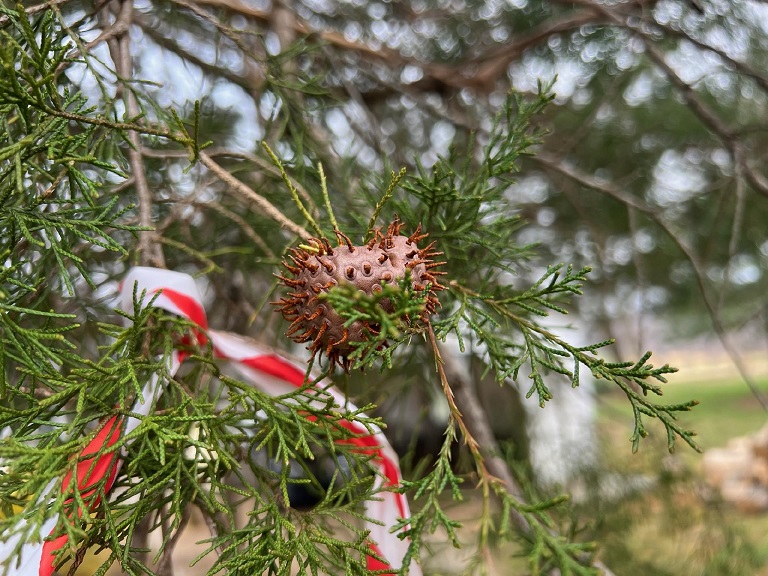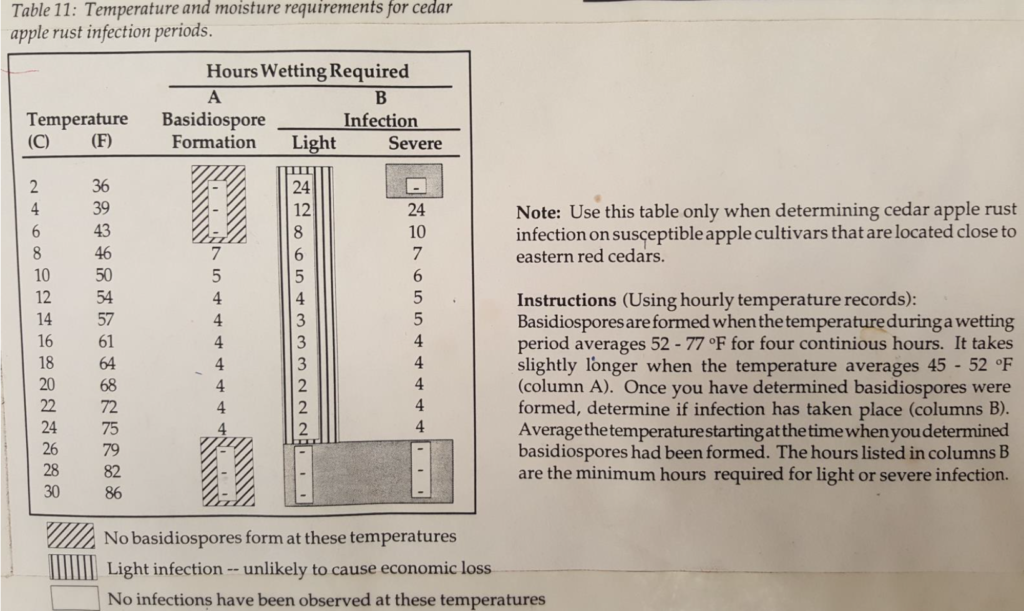Fire Blight Infections Predicted on 27 March in Southern Virginia; Fire Blight Infections Possible in Central Virginia; Plan to Protect Against Juniper Rusts Ahead
1. Infections are possible tonight with rains 27 March in Bristol and in Southern Virginia locations on any pome fruit with open flowers (Fig. 1). No infections are predicted in Rustburg. If wetting occurs in and around Tyro today fire blight infections are possible. Use your closest station in NEWA at https://newa.cornell.edu/fire-blight to determine the best course of action keeping in mind that EIP value must be 100 or above and the field with EIP number needs to turn dark red from orange to indicate “Infection.” Spray options against fire blight are:
SPRAY OPTION 1: preventive streptomycin – cover before the predicted wetting event any apple and pear trees in bloom with streptomycin: Harbor, or Agrimycin 17 WP, or Fire Wall 17 WP at 1.5 to 3 lb per acre (24 – 48 oz/A) plus LI 700 at a penetrating rate or use Regulaid instead of LI700. Based on the Regulaid label, you could use 2 pints penetrating rate. FireWall changed its formulation to FireWall 50WP and the rate to use this higher concentrated material is 8 – 16 oz/A. If rain does not occur, you can trigger the infection at EIP 100 or above if you provide water with a fungicide spray application, so if you are applying a previously planned fungicide application – add streptomycin to it. Option one is a must in large acreage apple and pear farms.
SPRAY OPTION 2: Only if you must, i.e. you want to see if model was correct, use OPTION 2: if you have a smaller acreage farm with apples or pears in bloom, you could wait and see will you get the wetting event or not on 27 March, because the showers might be spotty and occur on one location and not on the other. So, if you get the rain events on the 27 March, infection will occur and you will need to cover with streptomycin up to 24 h after the first rain event has started. Apply streptomycin in mix with Regulaid or LI700 up to 24 h after the infection rain event started (kick-back mode of application). In case you will use LI700 instead of Regulaid, use a penetrating action rate for LI700. If rain does not occur, infection will not occur, unless you provide water with a fungicide spray application near the infection dates, which can and will trigger the infection – so if you plan fungicide application add streptomycin to it. You can add your fungicides to streptomycin to make the spray more economical, and keep the SI (DMI) fungicides + mancozeb (3 lb/A) about every 14 days for rust and scab. In between you can use mancozeb + either Fontelis, Sercadis, Miravis or Excalia (SDHI fungicides).
WARNING: If you used captan recently, which would not be my choice, DO NOT add Regulaid or LI700 (at penetrating rate) to streptomycin for this bloom spray against fire blight.

2. Juniper rusts are slowly catching up in an early season. Last week Wednesday, John Saunders sent me a picture of a cedar apple rust fungus not yet fully expressing its orange horns out (Fig. 2). If and when these galls are exposed to the first warm rain this spring, these small orange spikes on the galls will absorb water, swell-up, and produce orange telial horns or gelatinous masses that produce teliospores, which germinate and form basidiospores which can then infect apple leaves and fruit. For the next weeks, besides scab, my top concern are rust infections whcih likely have already staerted in Southern Virginia. To determine when to apply apply a DMI fungicide like Inspire Super, Procure, Rally, Sonoma, Rhyme, Topguard or Indar in combination with Mancozeb use the model in Fig. 3 below. As per the analogue table model shown there, severe rust infections can occur when galls with spiky orange gelatinous horns are swollen and visible and the temperatures are between 39 – 75F but with different number of wetting hours required for severe infection, e.g. at 39F 24 h of wetting is required for severe infection, whereas at 75F only 4 h of wetting are required for severe infection. The model also allows you to predict with how many hours of leaf wetting will the basidiospores form on orange galls (e.g. at 46F it takes 7 h of wetting for basidiospores to form and be available to infect apples, whereas at 75F only 4 h of wetting are required for basidiospores to form).


